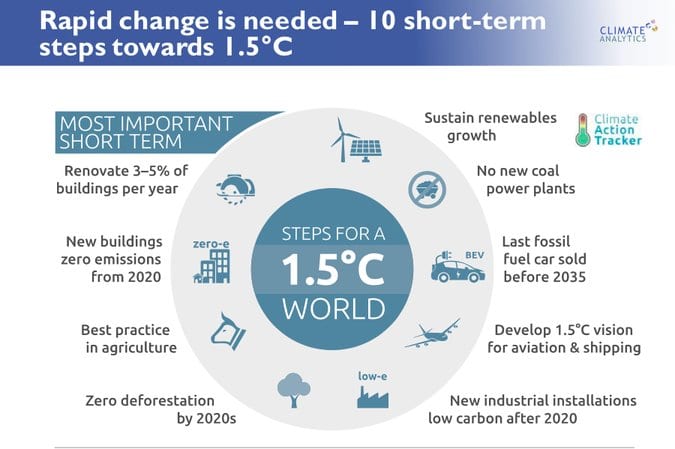One of the world’s leading climate experts says Australia needs to aim for 100 per cent renewables within two decades as part of its efforts to meet climate targets, and it stands to reap enormous economic – and environmental – benefits if it does.
Bill Hare, a Perth-based climate scientist and director of research group Climate Analytics, says there is renewed pressure for the world to act to cap average global warming at 1.5°C given the increasing evidence of extreme weather events, heat-waves, coral bleaching and other impacts.
Despite the Paris agreement to keep average global warming “well below” 2°C, and possibly to 1.5°C, the world is heading towards a minimum rise of 2.8°C, and the carbon “budget” to meet more ambitious targets is rapidly depleting.
Australia is also increasing its emissions, with the electricity sector recently reversing course after the scrapping of the carbon price.
The group has developed roadmaps, including for Australia, on how to reach an average 80 per cent renewable energy by 2030 and 100 per cent by 2050.
It includes details of how much land and how many rooftops these power sources would require; and how the proposals for each country would reduce energy demand and cost when compared to a business-as-usual scenario.
If the 100 per cent renewable energy targets seem outlandish, and the work of ideological researchers at NGOs and universities, as the detractors have wasted no time in claiming, they should be put into some context.
Four of the world’s biggest companies – Apple, Amazon, Google and Facebook, have vowed to source all their electricity needs from renewable energy within a few years, and they have also been joined by the likes of IKEA and brewing giant In-Bev, the owner of Foster’s.
Other Australian major energy users, like Sun Metals, Telstra, the Whyalla steel plant, Nectar Farms, and numerous smaller businesses are also investing heavily in wind and solar and storage, some up to the level of 100 per cent.
The Australian network operator Transgrid says 100 per cent renewable energy is both feasible and affordable, and the network lobby, Energy Networks Australia, put together a detailed path with the CSIRO on how to decarbonise the Australian grid in the 2040s.
And, Hare notes, ANU’s Andrew Blakers has suggested that doubling the current combined PV and wind installation rate to around 6GW per year would enable the country to reach 100 per cent renewable electricity in about 2033.
This contrasts with the federal government’s position that even 50 per cent renewable energy by 2030 is “reckless’, and the strong push-back from the coal lobby and conservative commentators that the 42 per cent renewable energy level by 2030 contemplated by the Finkel Review would also be a disaster.
Hare’s argument is that the pace of change is accelerating on two fronts – on the climate and environmental impacts of global warming, already been felt in barrier reefs and extreme and changing weather events; and from the falling cost of clean technologies.
He agrees with the likes of Professor Ross Garnaut and UNSW solar pioneer Martin Green that Australia can greatly benefit from positioning itself as a source of cheap, clean energy.
“We can still be the lucky country,” Hare says of the transition. “Australia has massive renewable energy resources – more so than most.













